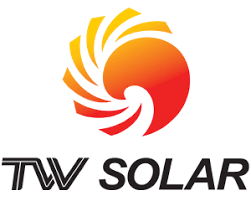Understanding Photovoltaic Cells
Photovoltaic cells, often known as solar cells, are remarkable devices that convert sunlight directly into electricity. These cells are the building blocks of solar panels, which have become increasingly popular for generating clean, renewable energy.
The Composition of Photovoltaic Cells
Photovoltaic cells typically consist of semiconductor materials, such as silicon, which is crucial for their functionality. When sunlight hits these semiconductor materials, it energizes electrons, setting them into motion, which is the fundamental process behind the generation of electricity.
The Conversion Process
Absorption of Sunlight
The process begins when sunlight strikes the photovoltaic cell. Solar cells are designed to absorb the photons present in sunlight. This absorption occurs in the semiconductor layer of the cell.
Generation of Electric Current
As these photons are absorbed, their energy transfers to electrons in the semiconductor material. This energy excites the electrons, elevating them to a higher energy state. These high-energy electrons move through the material, creating an electric current.
Flow of Electricity
This current then flows out of the cell through metal contacts placed on the top and bottom of the cell. The electricity generated is direct current (DC), which can be used to power DC devices or converted to alternating current (AC) for use in homes and businesses.
Key Parameters of Photovoltaic Cells
Efficiency
The efficiency of a photovoltaic cell is a crucial parameter. It represents the ratio of the energy output of the cell to the solar energy it receives. Current commercial solar cells typically have efficiencies ranging from 15% to 20%.
Cost and Budget Considerations
The cost of photovoltaic cells has been decreasing steadily, making them more accessible. The price of a solar panel system depends on its size, quality, and the technology used.
Size and Specifications
Solar panels come in various sizes and specifications to suit different applications, from small, portable panels to large, utility-scale installations.
Lifespan
The lifespan of a photovoltaic cell is another critical factor. Most solar panels are guaranteed to last at least 25 years, although they can continue functioning well beyond this period.
Material Quality and Speed
The quality of materials used in solar cells impacts their performance and durability. Higher quality materials typically yield better performance and longevity. The speed at which a photovoltaic cell converts sunlight into electricity is instantaneous, but the overall efficiency of this process is subject to various factors like sunlight intensity and cell design.

Advantages and Disadvantages
Solar cells offer several advantages, including renewable energy generation, low operating costs, and minimal environmental impact. However, their efficiency can be affected by weather conditions, and the initial installation cost can be high.
For a detailed understanding of how a photovoltaic cell converts sunlight into electricity, it is essential to delve into the science of semiconductor materials and the physics of electron movement. The ongoing advancements in solar cell technology continue to improve their efficiency and affordability, making solar energy a viable solution for global energy needs.